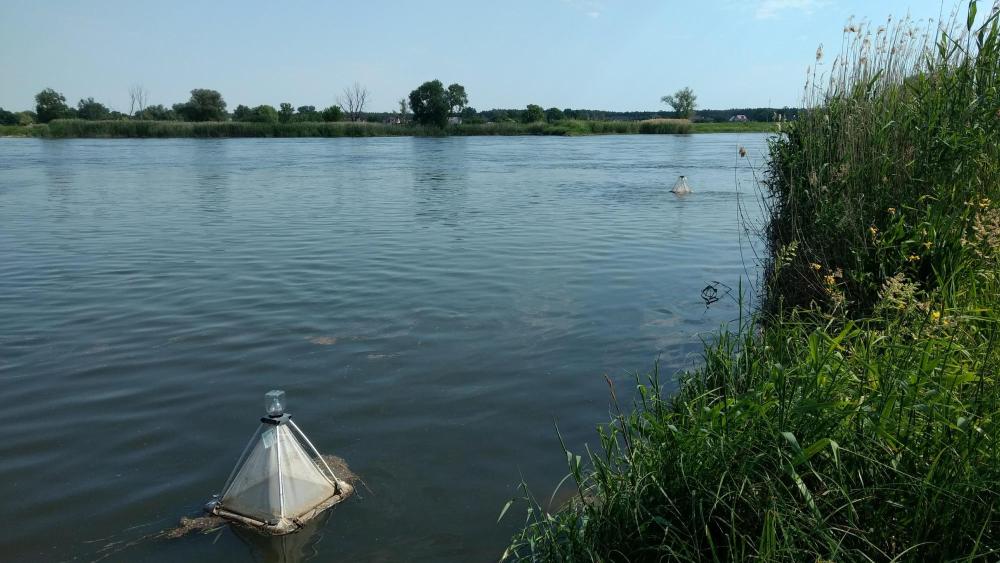
Floating emergence traps are used to document insect populations. © Dominik Martin-Creuzburg
The environmental disaster in the Oder River in August 2022 may also have affected aquatic insects. Aquatic insects, such as mosquitoes, caddisflies and mayflies, are characterised by a change of habitat during their development. They live as larvae in the water and leave the water as adults to reproduce (emergence). Both the larvae in the water and the adult insects on land play an important role in the respective food web as consumers and/or prey. Through their emergence, aquatic insects contribute significantly to a cross-ecosystem transfer of energy and nutrients. If an aquatic ecosystem is disrupted, as was the case with the environmental disaster in the Oder, this could also have far-reaching consequences for adjacent terrestrial ecosystems if the insect-mediated aquatic-terrestrial coupling is affected.
In sub-project 12b "Insect emergence from floodplain waters", scientists at Brandenburg University of Technology (BTU) Cottbus-Senftenberg are investigating the effects of the disaster on insect emergence (biomass export, biodiversity) along the Oder and in selected adjacent floodplain waters using floating emergence traps. In addition, insect traps on land will be used to assess the spread of adult aquatic insects in the floodplain and the importance of floodplain waters for the recolonisation of the Oder. The aim is to assess the impact of the disaster on insect emergence and to document the recovery after the disaster.

